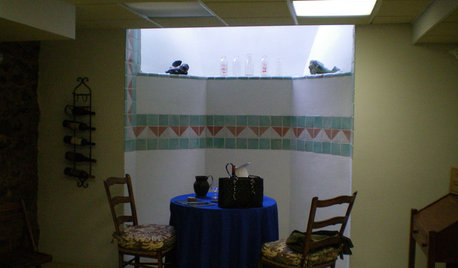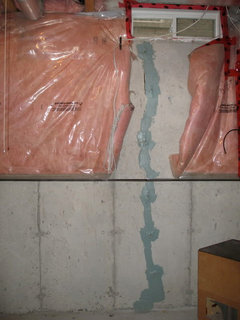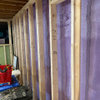water problem inside of finished basement wall
ranger481vs
13 years ago
Featured Answer
Comments (10)
worthy
13 years agoranger481vs
13 years agoRelated Professionals
Kettering General Contractors · Leon Valley General Contractors · Owosso General Contractors · Toledo General Contractors · Wheaton General Contractors · Euless Architects & Building Designers · Henderson Architects & Building Designers · River Edge Architects & Building Designers · Saint James Architects & Building Designers · Wauconda Architects & Building Designers · Belvedere Park Flooring Contractors · Chesapeake Flooring Contractors · Hilton Head Island Flooring Contractors · Orlando Flooring Contractors · Reading Flooring Contractorsranger481vs
13 years agoworthy
13 years agoranger481vs
13 years agoworthy
13 years agoworthy
13 years agojak1
13 years agoworthy
13 years ago
Related Stories

ECLECTIC HOMESHouzz Tour: Problem Solving on a Sloped Lot in Austin
A tricky lot and a big oak tree make building a family’s new home a Texas-size adventure
Full Story
REMODELING GUIDESThe Hidden Problems in Old Houses
Before snatching up an old home, get to know what you’re in for by understanding the potential horrors that lurk below the surface
Full Story
HOUSEKEEPING10 Problems Your House May Be Trying to Show You
Ignore some of these signs and you may end up with major issues. We tell you which are normal and which are cause for concern
Full Story
DECORATING GUIDES5 Pet Problems Solved by Design
Design-Friendly Ideas for Pet Beds, Bowls, Doors — and yes, the Litter Box
Full Story
BASEMENTSBasement of the Week: High-End Problem Solving for a Show House
Dark and dated? Naturally. But this '70s-style basement had myriad other design issues too. See how the designer rose to the challenge
Full Story
DECORATING GUIDESSolve Privacy Problems With Window Film
Let the light in and keep prying eyes out with an inexpensive and decorative window film you can apply yourself
Full Story
DIY PROJECTSHow to Create Your Own Semicustom Media Wall
Don’t let the price of a custom built-in stop you. Put one together with ready-made pieces and a little finish help
Full Story
INSIDE HOUZZInside Houzz: A Walnut Wall of Storage Opens Up a Kitchen
A 30-foot wall of storage frees up cooking areas and counters for food prep and entertaining
Full Story
HOUSEKEEPINGProtect Your House From Winter Water Damage
Avoid costly repairs by learning to spot potential problem areas before water damage is done
Full Story
LANDSCAPE DESIGNProblem Solving With the Pros: How to Build a Garden in an Urban Canyon
Skyscrapers, noise and deep shade create an unlikely sweet spot for a timeless green retreat in New York City
Full StoryMore Discussions









worthy